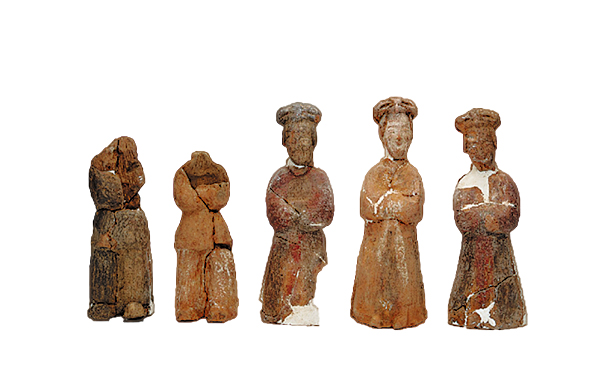

Time and place
The tombs can be divided into three periods.
The first one, the Sixteen Kingdoms period, has 38 tombs in four rows in the northeast. These are all catacombs with long sloping passages, a common design in central Shaanxi since the Western Han, says Chai. Artifacts unearthed from these tombs include clay figurines, lamps and cooking stoves.
In this year's excavation, archaeologists have found a tomb containing carved earthen replicas of wooden structures and engravings on the soil walls of the burial rooms that resemble wooden beams' frames that were commonly used by the Han ethnic group. This practice is rare and is believed to have emerged during the Sixteen Kingdoms period in central Shaanxi, according to Wei Zheng, an archaeology professor at Peking University.
According to Chai, this is often viewed as a reflection of ancient Chinese people's ideas about life and death — that is, to serve the dead as if they were living — and shows other ethnic groups' absorption of Han culture in the Sixteen Kingdoms period.
The five rows of 101 tombs of the second period — from the Northern Wei to the Western Wei Dynasty (535-556) — are to the south and west of those of the earlier period. The majority of them are also catacombs with long, sloping passages. But only a few artifacts have been unearthed from these tombs, including coins, clay jars and a model couch.